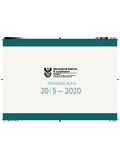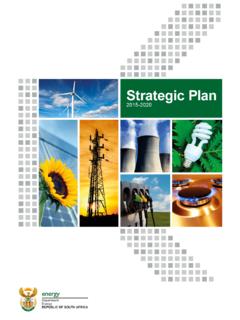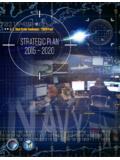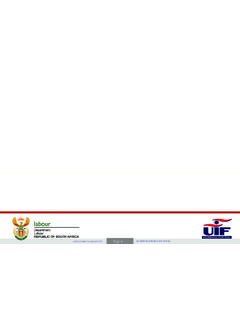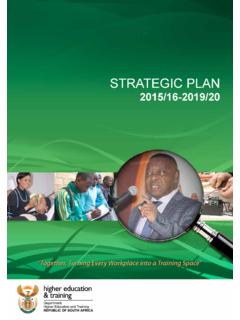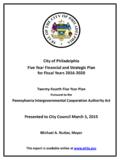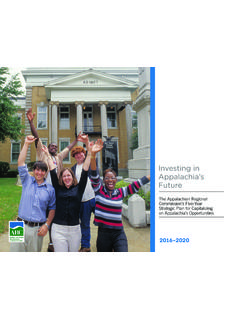Transcription of Global strategic directions for strengthening …
1 Global strategic directions for strengthening nursing and midwifery 2016 2020. Page 1. Global strategic directions for strengthening nursing and midwifery 2016 2020. ST E M. DATA. ING. G OV. G. Y. ED. IN. S. NU. NN. SY. ER. NO. N. RD. IN. UC. A. ER. SI AT A N L D. A. M. R. AN. IF. N. NG W I ON AND TR CE AND P INF IO. A. R. SA D O R M AT. N D S TA N AND MID. Page 2. WHO Library Cataloguing-in-Publication Data Global strategic directions for strengthening nursing and midwifery 2016-2020. Services. Manpower. Priorities. Planning. Health Organization. ISBN 978 92 4 151045 5 (NLM classification: WY 108). World Health Organization 2016. All rights reserved. Publications of the World Health Organization are available on the WHO website ( ) or can be purchased from WHO Press, World Health Organization, 20 Avenue Appia, 1211 Geneva 27, Switzerland (tel.: +41 22 791 3264;. fax: +41 22 791 4857; email: Requests for permission to reproduce or translate WHO publications whether for sale or for non-commercial distribution should be addressed to WHO Press through the WHO website ( ).)
2 The designations employed and the presentation of the material in this publication do not imply the expression of any opinion whatsoever on the part of the World Health Organization concerning the legal status of any country, territory, city or area or of its authorities, or concerning the delimitation of its frontiers or boundaries. Dotted and dashed lines on maps represent approximate border lines for which there may not yet be full agreement. The mention of specific companies or of certain manufacturers' products does not imply that they are endorsed or recommended by the World Health Organization in preference to others of a similar nature that are not mentioned. Errors and omissions excepted, the names of proprietary products are distinguished by initial capital letters. All reasonable precautions have been taken by the World Health Organization to verify the information contained in this publication. However, the published material is being distributed without warranty of any kind, either expressed or implied.
3 The responsibility for the interpretation and use of the material lies with the reader. In no event shall the World Health Organization be liable for damages arising from its use. Design Blossom. Layout by L'IV Com S rl, Villars-sous-Yens, Switzerland. Printed in France Page 3. Table of Contents Foreword.. 3. Acknowledgements .. 4. 1. Introduction .. 5. 2. Background .. 8. The availability, accessibility, and quality of the nursing and midwifery workforce .. 8. The vital role of the nursing and midwifery workforce in building the resilience of communities to respond to diverse health conditions .. 8. Notable achievements have been made .. 9. The nursing and midwifery workforce: enablers for health service delivery priorities .. 10. Persistent nursing and midwifery challenges require innovative and transformative strategies and actions.. 10. 3. Overview of the Global strategic directions for strengthening nursing and midwifery 2016 2020.
4 12. Vision .. 13. Thematic areas .. 14. Guiding principles for implementation .. 14. Target audience .. 15. 1. Page 4. 4. Thematic areas of the Global strategic directions for strengthening nursing and midwifery 2016 2020.. 16. Theme 1. Ensuring an educated, competent and motivated nursing and midwifery workforce within effective and responsive health systems at all levels and in different settings .. 16. Theme 2. Optimizing policy development, effective leadership, management and governance .. 18. Theme 3. Working together to maximize the capacities and potentials of nurses and midwives through intra- and interprofessional collaborative partnerships, education and continuing professional development .. 21. Theme 4. Mobilizing political will to invest in building effective evidence- based nursing and midwifery workforce development .. 22. 5. Implementation of the Global strategic directions for strengthening nursing and midwifery 2016 2020.
5 25. Country and regional needs .. 25. Areas for expedited action .. 25. Partnerships and alliances .. 26. Monitoring and evaluation .. 26. Annex 1. World Health Assembly resolutions on nursing and midwifery .. 35. Annex 2. WHA strengthening nursing and midwifery .. 36. Annex 3. Lists of participants: Global strategic directions for strengthening nursing and midwifery 2016 2020 expert consultations .. 40. References .. 46. Global strategic directions for strengthening nursing and midwifery 2016 2020. Page 5. Foreword For the first time in history, the population of people aged 60 years and older outnumber the population of children under 5 years. The implications of this shift, in terms of the demands and costs of health care are immense. Economic growth, modernization and urbanization have opened wide the entry point for the spread of unhealthy lifestyles. Instead of diseases vanishing as living conditions improve, socioeconomic progress is actually creating the conditions that favour the rise of noncommunicable diseases.
6 Communicable diseases such as HIV/AIDS, tuberculosis, malaria and in most recent years Ebola and Zika virus disease, continue to devastate communities. Furthermore, addressing maternal and child health is a high priority for the international community that deserves the attention and services of nurses and midwives. Nurses respond to the health needs of people in all settings and throughout the lifespan. Their roles are critical in achieving Global mandates such as universal health coverage and the Sustainable Development Goals. These mandates provide a challenge as well as an opportunity for making improvements in nursing and midwifery education and services in a comprehensive way that encompasses health promotion, disease prevention, treatment and rehabilitation. nursing and midwifery professions can transform the way health actions are organized and how health care is delivered if they are regulated and well supported.
7 The services they offer can also provide a rallying point for inter- and intradisciplinary health actions, which is at the core of the WHO Global strategic directions for strengthening nursing and midwifery 2016 2020. The strategy takes into account the dynamism of Global health five years from now, WHO and partners will take stock and continue to align strategies with evidence-based Global health trends. The application of community-responsive interventions within health systems that promote conducive work environments in line with the objectives of universal health coverage and the Sustainable Development Goals can help nurses and midwives to continue to make a difference through the provision of high-impact and low-cost interventions. strengthening nursing and midwifery to support universal health coverage is a key imperative for improving the health of populations. Universal health coverage is one of the most powerful equalizers among all policy options.
8 The declaration says it best: To promote physical and mental health and well-being, and to extend life expectancy for all, we must achieve universal health coverage and access to quality health care. No one must be left behind.. (Opening remarks at the Eighth Global Meeting of Heads of WHO Country Offices, 9 November 2015). 3. Page 6. Acknowledgements WHO is grateful to all participants of the various face to face consultations (see Annex 3 for details), including the web-based Global consultation, for their contribution to the development of this document. WHO is also grateful to the various WHO collaborating centres for nursing and midwifery development, the International Council of Nurses, the International Council of Midwives and other professional associations for their contributions towards the finalization of these Global strategic directions for strengthening nursing and midwifery 2016 2020. Conceptualization and coordination of efforts was undertaken by Annette Mwansa Nkowane, Technical Officer, nursing and Midwifery, Health Workforce Department, with technical support in the preparation and drafting of the Global strategic directions on nursing and midwifery from Stephanie Ferguson, independent consultant, under the leadership of Jim Campbell, Director, Health Workforce Department.
9 The financial support offered by the French Government through the Muskoka grant towards the development of this document is greatly appreciated. Technical inputs: Onyema Ajuebor, Technical officer, Health Workforce Department Secretarial support: Beatrice Wamutitu, Secretary, Health Workforce Department Editing: John Dawson Global strategic directions for strengthening nursing and midwifery 2016 2020. Page 7. 1. Introduction In May 2000, the Fifty-fourth World Health Assembly, by resolution on strengthening nursing and midwifery, requested the Director-General to prepare rapidly a plan of action for strengthening nursing and midwifery . As a follow-up to that, the first strategic directions for nursing and midwifery were developed in 2002 (1) and updated in 2011 (2). Since then, several resolutions on strengthening nursing and midwifery services have been passed by the World Health Assembly, of which the most recent was resolution of 2011 (see Annex 2).
10 The strategic directions for nursing and midwifery provide policy-makers, practitioners and other stakeholders at every level of the health care system with a flexible framework for broad-based, collaborative action to enhance capacity for nursing and midwifery development. The World Health Organization (WHO) continues to act on its commitment to strengthening nursing and midwifery and the health workforce in general. In May 2014, the Sixty-seventh World Health Assembly adopted resolution on the Follow-up of the Recife Political Declaration on Human Resources for Health: renewed commitments towards universal health coverage. In paragraph 4(2) of that resolution, Member States requested the Director-General of WHO to develop and submit a new Global strategy for human resources for health for consideration by the Sixty-ninth World Health Assembly. The Global Strategy on Human Resources for Health: Workforce 2030 (3) provides the foundation for the Global strategic directions for strengthening nursing and midwifery 2016 2020.










